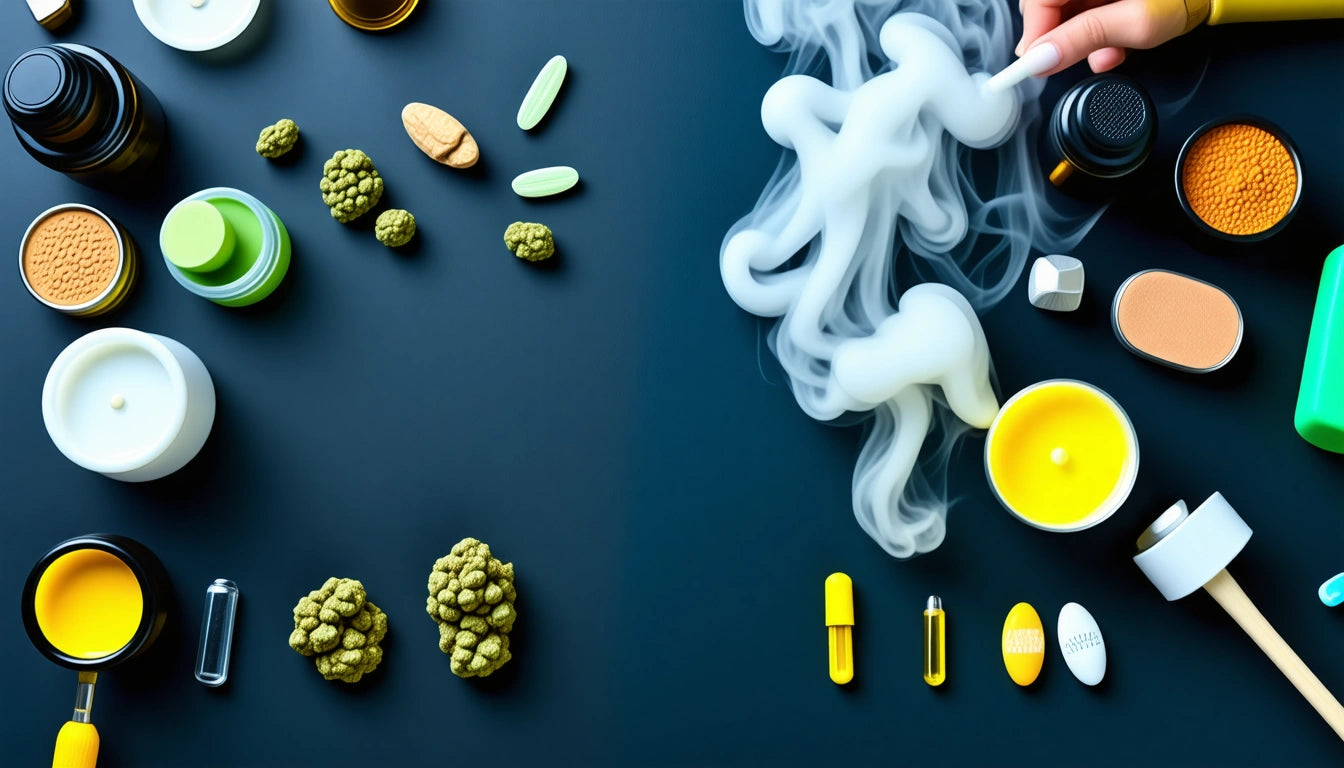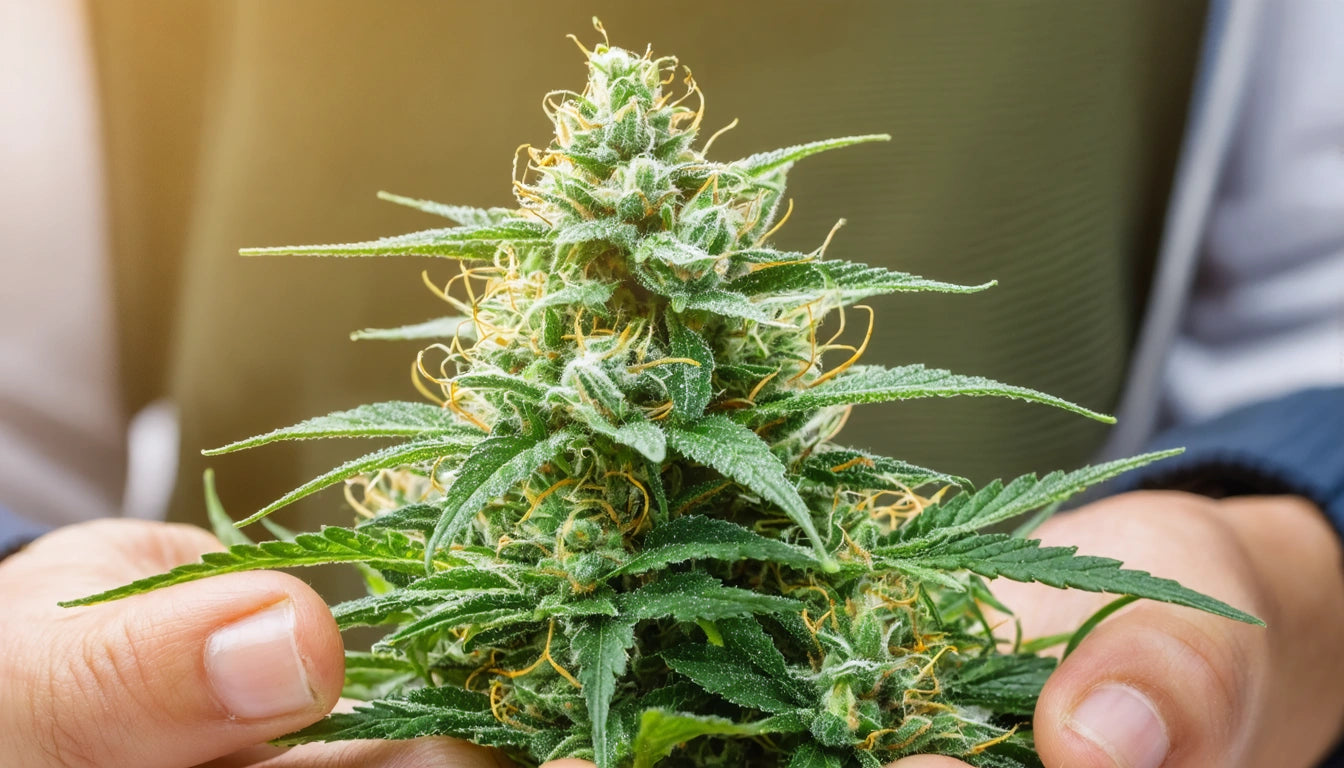Table of Contents
Dabbing vs. Smoking: Understanding the Differences and Benefits
Cannabis consumption methods have evolved significantly over the years, with dabbing and smoking representing two distinct approaches that deliver notably different experiences. Understanding the nuances between these methods helps consumers make informed choices based on their preferences, tolerance levels, and desired effects.
Fundamentals of Dabbing and Smoking
Smoking cannabis involves combusting dried flower material and inhaling the resulting smoke. This traditional method typically uses pipes, bongs, or rolled papers to deliver cannabinoids through combustion. In contrast, dabbing involves vaporizing concentrated cannabis extracts on a heated surface and inhaling the vapor produced.
The fundamental difference between these methods lies in the material being consumed. Smoking utilizes whole plant material containing approximately 15-25% THC, while dabbing uses concentrates that can contain 60-90% THC or more. This concentration difference creates distinct experiences that appeal to different user preferences.
Potency and Effects Comparison
Dabbing Effects
Dabbing delivers a significantly more potent experience compared to smoking. The concentrated nature of dabs means users consume more cannabinoids in a single hit than they would from several puffs of flower. According to this comparison of dabs and traditional cannabis, the effects from dabbing typically:
- Onset more rapidly
- Reach higher intensity
- Deliver cleaner, more focused effects
- Last for a shorter duration in some cases
Smoking Effects
Smoking cannabis flower provides a more gradual onset and typically delivers a full-spectrum experience due to the entourage effect from various cannabinoids and terpenes present in the plant material. The effects from smoking are generally:
- More gradual in onset
- Moderate in intensity
- Broader in sensation due to the full plant profile
- Longer-lasting but less intense than dabbing
Health Considerations Between Methods
The health implications of dabbing vs. smoking remain an important consideration for consumers. Research on dabs and smoking health effects suggests several key differences.
Smoking cannabis creates combustion byproducts including tar, carbon monoxide, and other potential carcinogens. These byproducts result from burning plant material and can irritate the respiratory system over time.
Dabbing, when done properly with quality concentrates, produces vapor rather than smoke, potentially reducing exposure to combustion-related toxins. However, dabbing has its own considerations:
- Higher temperatures can create their own harmful compounds
- Poor quality concentrates may contain residual solvents
- The intense potency can lead to overconsumption
For processing cannabis into concentrates, proper equipment is essential. Commercial-grade grinder machines for cannabis processing ensure consistent particle size and extraction efficiency, leading to safer, higher-quality concentrates compared to manual methods.
Equipment and Setup Requirements
Dabbing Equipment
Dabbing requires specialized equipment that can intimidate newcomers. A basic dabbing setup includes:
- Dab rig (similar to a water pipe but designed for concentrates)
- Nail or banger (the heating element, typically quartz, titanium, or ceramic)
- Torch (for heating the nail) or e-nail (electronic heating element)
- Dab tool (for applying concentrate to the heated surface)
- Carb cap (to regulate airflow and temperature)
This equipment represents a higher initial investment compared to smoking accessories.
Smoking Equipment
Traditional cannabis smoking requires simpler tools:
- Pipe, bong, or rolling papers
- Grinder for breaking down flower
- Lighter or hemp wick
The simplicity and lower cost of entry make smoking more accessible to newcomers, though many enthusiasts eventually explore both methods.
Consumption Experience and Learning Curve
The experiential differences between dabbing and other consumption methods extend beyond just the effects.
Smoking cannabis has a relatively gentle learning curve. Most users quickly master the basics of grinding flower, packing a bowl, or rolling a joint. The experience is forgiving, with less risk of overwhelming effects for beginners who can easily control their intake puff by puff.
Dabbing presents a steeper learning curve that involves:
- Temperature management (too hot or cold affects vapor quality and effects)
- Dosage control (challenging due to high potency)
- Technique development (proper inhalation timing and carb cap usage)
- Equipment maintenance (cleaning residue for optimal flavor)
Many consumers begin with smoking before progressing to dabbing as their tolerance and experience grow. Some prefer to keep both methods in their repertoire for different occasions and desired effects.
Future Evolution of Cannabis Consumption Methods
As cannabis technology advances, the line between dabbing vs. smoking continues to blur. Hybrid devices that offer both capabilities are emerging, while innovations in extract production create new concentrate forms with varying properties.
The future likely holds more refined consumption methods that preserve the benefits of both approaches while minimizing drawbacks. Electronic temperature control, improved filtration systems, and new extract types will continue reshaping how consumers approach both dabbing and smoking.
Whether you prefer the tradition and full-spectrum experience of smoking or the potency and efficiency of dabbing, understanding the fundamental differences helps ensure a consumption experience aligned with your preferences and needs.











Leave a comment
All comments are moderated before being published.
This site is protected by hCaptcha and the hCaptcha Privacy Policy and Terms of Service apply.